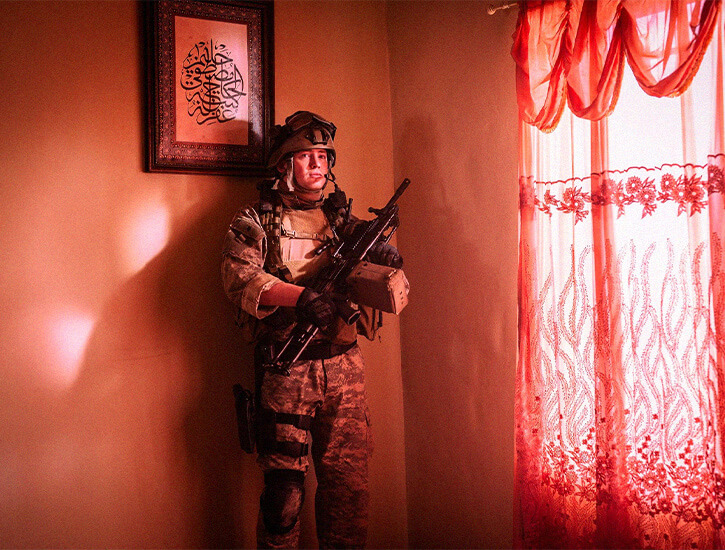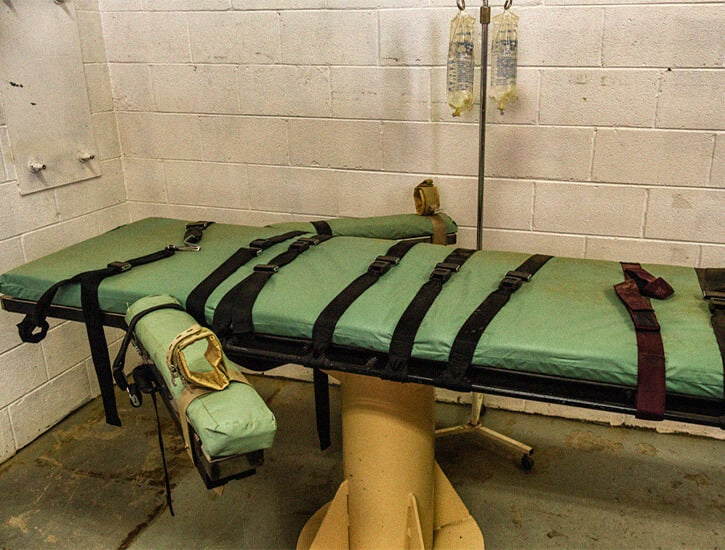
By KIMI HILL
One hundred years ago, three Japanese artists, Matsusaburo Hibi (1886-1947), Chiura Obata (1885-1975) and Teikichi Hikoyama (1884-1957), were living in San Francisco and actively exhibiting in the San Francisco mainstream art world in venues such as the San Francisco Art Association.
Today you have the opportunity to see paintings by Hikoyama and Obata side by side on display in the first-floor gallery of the de Young Museum in Golden Gate Park, with their friend Hibi’s painting in an adjoining room.
From 1996 to 2016, under the visionary curatorship of Tim Burgard, the Fine Arts Museums of San Francisco acquired the works of these three Issei artists as well as Kibei artist Taneyuki Dan Harada (1923-2020). Burgard has worked to expand the collection of American art at the de Young Museum, and this autumn all four artists have paintings on display in the permanent galleries.
In 2000 for one of the closing exhibitions at the old de Young Museum, Burgard curated an Obata retrospective titled “Great Nature: The Transcendent Landscapes of Chiura Obata.” The exhibit affirmed Obata’s significance in the art historical record and introduced a new generation to his California landscapes as well as illuminating his vision of Great Nature as the inspiration for life and art for all people.
Three large Obata paintings entered the permanent collection of the Fine Arts Museum at this time, including “Lake Basin in the High Sierra” (ca 1930). Obata kept his artist’s gaze trained intently on the beauty of the California landscape no matter the challenges he faced as an immigrant artist.
Hikoyama’s “Mt. Tamalpais” (1927) is currently exhibited next to Obata’s “Lake Basin in the High Sierra.” Hikoyama is credited to be the first Japanese woodblock printing artist creating work in California. He would return to Japan in 1933. A fellow Japanese artist once wrote, “Hikoyama’s works…consist of an expression of passion that burns like a flame.” He was among the guests at the lively Obata household on Sutter Street in San Francisco’s Japantown, a gathering place for artists, intellectuals, and friends, where he signed the Obata guestbook with a sketch.
Obata, Hikoyama, Hibi and other artists formed the East West Art Society in 1921, a multiethnic art association that was the first of its kind in California. “At least in the world of art there should be no barriers between the East and the West,” recalled Obata. Their exhibits were a show of unity with American artists during a time when blatant xenophobia and institutionalized racism were targeting Asians in California.

Two paintings by Topaz artists, Hibi and Harada, are on view in an adjacent gallery in the new exhibit, “A Sense of Loss: Art and Empathy,” also curated by Burgard, which addresses the challenging and unprecedented past few years that Americans have been facing. Says Burgard, “Many people have expressed feelings of being held captive by forces beyond their control or understanding. Almost everyone has experienced a sense of loss, most profoundly of fellow human beings, but also of normalcy. As always, art will play an essential role in recording these historic events, while also articulating what can be gained through the embrace and expression of empathy.”
Hibi was a prolific artist in the San Francisco area, and he and Obata were close friends. During the upheaval of the forced relocation and incarceration of World War II, they immediately worked together to form the Tanforan Art School and later the Topaz Art School. They developed a fine arts curriculum that they felt rivaled any art school. Hibi wrote, “I am now inside barbed wires but still sticking to Art – I seek no dirt of the earth — but the light in the star of the sky.”
In 1943, during a time of heightened tensions in the Topaz concentration camp, Obata was physically attacked and later released for his safety. Obata had spent a year in the camps, but Hibi would remain and direct the art school until 1945. He and his family were released but Hibi died two years later in New York City. His widow, Hisako, gave Hibi’s painting “Block #9 Topaz” (1945) to Obata. This painting was displayed prominently in Obata’s studio until his death, no doubt in honor of his friend and in remembrance of their partnership both as artists and educators living under extraordinary circumstances.

Harada was born in San Francisco and spent seven years of his childhood in Japan. He studied painting for the first time at the Tanforan and Topaz art schools. His journey through incarceration from age 18 lasted four years while he was held in four confinement sites — Tanforan, Topaz, Leupp, and Tule Lake — where he continued to paint as well as exhibit. Having renounced his citizenship under the divisive period of the “loyalty questionnaires,” his U.S. citizenship was eventually restored in 1959.
His remarkable journey as a young artist is symbolized in his reflective painting “Barracks” (1944). He said, “I used barracks as a motif in most of my paintings. For me the barracks became the symbol of incarceration.”
These artworks are scheduled to be on exhibit through spring 2022. Museum visitors can also view the classic “Mother Earth” silk painting by Obata in the second-floor gallery. And until Aug. 7, 2022 the Hung Liu installation “Golden Gate” is on view in the central court as a fitting homage to a beloved artist, also an immigrant from Asia, who passed away in August.
The de Young Museum is located at Golden Gate Park/50 Hagiwara Tea Garden Drive in San Francisco. Open Tuesday-Sunday, 9:30 a.m.-5:15 p.m. https://deyoung.famsf.org

 ‘Napping Princess’ at Playhouse 7, Monica Film Center
‘Napping Princess’ at Playhouse 7, Monica Film Center
 War Stories
War Stories
 NYT Connections hints and answers for June 27: Tips to solve 'Connections' #747.
NYT Connections hints and answers for June 27: Tips to solve 'Connections' #747.
 Hello Kitty’s Birthday Jubilee at Monterey Park Library
Hello Kitty’s Birthday Jubilee at Monterey Park Library
 Live from space! Watch Earth live streamed online.
Live from space! Watch Earth live streamed online.
 Deterrence Theory
Deterrence Theory
 Blizzard представила трейлер коллаборации Overwatch 2 с G.I. Joe
Blizzard представила трейлер коллаборации Overwatch 2 с G.I. Joe
 U.S. satellites reveal China's solar dominance
U.S. satellites reveal China's solar dominance
 SilverName высказался об уровне организации BetBoom Classic: Hearthstone Battleground
SilverName высказался об уровне организации BetBoom Classic: Hearthstone Battleground
 Live from space! Watch Earth live streamed online.
Live from space! Watch Earth live streamed online.
 U.S. satellites reveal China's solar dominance
U.S. satellites reveal China's solar dominance
 XZise высказался об уходе из CYBERHERO
XZise высказался об уходе из CYBERHERO
 PS5 vs. PS5 Slim: What are the differences?
PS5 vs. PS5 Slim: What are the differences?
 NYT Strands hints, answers for June 27
NYT Strands hints, answers for June 27
 Botched by Design
Botched by Design
 Фанаты превратили Deadlock в оригинальную Neon Prime — мод выйдет уже скоро
Фанаты превратили Deadlock в оригинальную Neon Prime — мод выйдет уже скоро
 Listen to the eerie sounds of Mars recorded by a NASA rover
Listen to the eerie sounds of Mars recorded by a NASA rover
The #M'BakuChallenge is taking off, but this 7Salma Hayek is firmly against Barbie's Frida Kahlo doll6 brands contributing to feminist causes for International Women's DayPredictive text helped make a pretty great Gwenyth Paltrow Goop parodyMeryl Streep revived her own meme at the Oscars and people were loving itHands have never been so interesting, thanks to the 'Subway Hands' Instagram accountBumble bans guns from profile photos in wake of Parkland shootingHands have never been so interesting, thanks to the 'Subway Hands' Instagram accountWhat Frances McDormand meant by an 'inclusion rider' at the OscarsJennifer Lawrence is a germaphobe and thinks 'dick is dangerous' Amazon Book Sale: Shop early deals now Li Auto CEO confirms no overseas expansion plans by 2025 · TechNode AI company Cloudwalk’s large Stephen Hawking's legacy honoured with new 50p coin Court date set for NetEase and Blizzard’s $43.5 million compensation case · TechNode Vice president of Xiaomi’s B2B business leaves for VR company iQiyi Smart · TechNode Best Kindle Unlimited deal: Get 3 months of Kindle Unlimited for 99 cents TSMC sees revenue and profit decline in Q2 · TechNode Massive medical company data breach impacts millions NYT Connections hints and answers for April 19: Tips to solve 'Connections' #678.
0.1614s , 9996.9921875 kb
Copyright © 2025 Powered by 【エロ動画 洋路利 ポルノ映画】An Issei Artists Reunion at the de Young Museum,Global Hot Topic Analysis